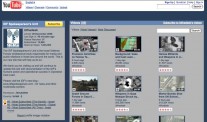 Whatever ones views of the rights and wrongs, Israel‘s media operation to accompany its Gaza offensive has been an object lesson in the uses and limitations of War 2.0.
Whatever ones views of the rights and wrongs, Israel‘s media operation to accompany its Gaza offensive has been an object lesson in the uses and limitations of War 2.0.
Talking to a senior Middle Eastern diplomat yesterday, and to a friend reporting from (or stuck) in Jerusalem, there is a (very) grudging – respect is the wrong word, but it’ll have to do – for the perceived “success” of Israel’s Gaza media campaign.
So let’s unpick it a little. At the most fundamental level, Israel benefits from a very simple message: whatever happens in Gaza is simply the tragic but inevitable consequence of years of rocket attacks.
On a different level, Israel is the army, politicians, competing factions and personalities and it suffers from all the usual co-ordination issues. Back in November 2008 the Israeli Defence Force (IDF) spokeman’s office signed a memo with its counterpart at the Foreign Ministry agreeing to give prior notice of operations and provide briefing video for embassies. Such agreements are usually evidence of inter-agency discord rather than harmony.
And War 2.0 is very much an IDF initiative. After losing out to Hizbollah in Lebanon – where it adopted a strategy embedding journalists with ‘minders’, and seeing its Chief of Staff lambasted in the Winograd Commission report, the IDF has moved to a position of confronting Hamas by bypassing conventional reporting altogether.
Back in January 2008, 26 IDF ‘combat cameramen’ held a fortnight long exercise with US military camera teams, and were “drilled in the use of wireless image transmission technology.” A year later and IDF cameras, not embedded reporters, are supplying material to the IDF’s YouTube channel. It kicked off on 29 December, 2008. The clips are accompanied by a vlog. At writing it has over a million channel views and 13,000 subscribers (cf. Al Jazeera English on YouTube with 2.5m channel views and over 42,000 subscribers).
There’s also a blog (over 55,000 ‘hits’ at writing), and you can follow the IDF on twitter (275 followers at writing). And according to the Jerusalem Post “the IDF has been in regular contact with over 50 major American blogs covering the fighting.”
(You can see from this Andrew Sullivan post a spectrum-ish review of early US blog reaction to the Gaza offensive.)
So how effective is barring conventional reporters and relying instead on a self-managed media strategy?
The key audiences for Israel remain its own domestic audience and US public opinion. The biggest threat to Israel’s generals are their own public and politicians.
The effect of the current strategy is not to convince those who will remain opposed to Israel, but to mobilise the base and provide its supporters with the ammunition they need to make themselves heard. By denying the MSM access Israel turns normally mild-mannered anchors like CNN‘s Jim Clancy into on-air protagonists (subscription), thereby serving to undermine – to Israel’s supporters at least – the conventional journalistic claim of neutrality.
But in the information war, Israel is also fighting the consequences of the real one, as portrayed in a syndicated report like this:
With this:
What’s missing from Israel’s strategy? The possibility of independent verification. Israel has had to source its claims much quicker, but claims they remain. Journalism is MIA, and with it Israel’s only real chance to prove to those who haven’t made up their minds, that it might have a point.
++FURTHER READING++
War 2.0: The 24/7 English news channel front
War 2.0: ‘Neutral’ observers, Blogs and SMS alerts
War 2.0 Citizens, soldiers and spokesmen
3 responses to “War 2.0: Israel’s post-journalism campaign in Gaza”
[…] READING++ War 2.0: ‘Neutral’ observers, Blogs and SMS alerts War 2.0: Israel’s post-journalism campaign in Gaza War 2.0: Citizens, soldiers […]
[…] READING++ War 2.0: The 24/7 English news channel front War 2.0: Israel’s post-journalism campaign in Gaza War 2.0: Citizens, soldiers […]
[…] The 24/7 English news channel front War 2.0: ‘Neutral’ observers, Blogs and SMS alerts War 2.0: Israel’s post-journalism campaign in Gaza War 2.0: Citizens, Soldiers […]